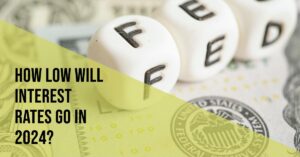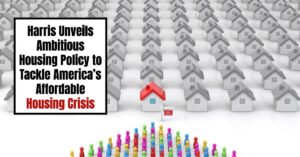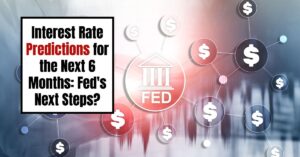As we journey through 2024, one pressing question captivates the attention of economists, homeowners, and prospective buyers alike: how low will interest rates go in 2024? This inquiry is not just a numbers game; it's about understanding how monetary policy will shape the financial futures of millions. With the Federal Reserve actively recalibrating its strategies to steer the economy, the implications of these decisions could ripple across every corner of the financial landscape.
How Low Will Interest Rates Go in 2024?
The Federal Reserve's Game Plan
To understand the direction of interest rates, we must first delve into the actions and forecasts of the Federal Reserve (the Fed). Throughout 2023, the Fed implemented a series of aggressive rate hikes in a bid to combat soaring inflation that peaked at historic levels. However, as we look ahead into 2024, there is a noticeable shift in the Fed's approach.
Interest rate outlook for 2024 indicates a potential decrease in the federal funds rate, with projections suggesting it could fall to approximately 4.6% by the end of the year. These cuts are contingent on ongoing economic conditions, particularly inflation trends and employment data.
- Current Rate: The federal funds rate is currently set in the range of 5.25% to 5.50%.
- Projected Rate for 2024: Analysts anticipate that the interest rate could go as low as 4.6% by the end of 2024, reflecting a more cautious approach than earlier in the year when more aggressive cuts were expected.
In its latest economic projections released, the Fed indicated a possible pivot towards easing monetary policy. Many analysts predict that by September, we might see a first-rate cut, which could lower the federal funds rate that currently hovers around 5-5.25%.
The Fed projects a solid economic growth rate of about 2.1% for 2024, which influences its rate-cutting strategy. If growth slows significantly, it may prompt earlier cuts. The job market's performance, including wage growth and unemployment rates, will also play a critical role in determining when and how much the Fed will cut rates.
Economists are increasingly optimistic, with more than half of those surveyed expecting rates to drop in the coming months as inflation shows signs of stabilizing and economic growth begins to moderate. For more detailed insights on the Fed’s perspective, you can refer to their official forecast here.
Factors Influencing Rate Adjustments
The decision to cut rates will not be taken lightly. The Fed aims to balance fostering economic growth while ensuring inflation remains under control. Recent data reflecting consumer spending and employment levels will play crucial roles in the Fed’s decision-making process. If the economy continues to show resilience amid lower inflation rates, expect a cautious yet progressive lowering of interest rates throughout the year.
Mortgage Rates: What to Expect
With the Fed’s anticipated moves, how low will mortgage rates go in 2024? This question is particularly critical for homeowners and prospective buyers. Predictions indicate a promising decline in mortgage rates, aligning with the expected cuts in the federal funds rate.
Currently, the average 30-year fixed mortgage rate has lingered around 7% for much of the first half of 2024. However, industry experts foresee a shift, with forecasts suggesting that mortgage rates could fall to around 6.6% by year-end, with some optimistic projections indicating rates dipping below 6% by late 2024.
The Mortgage Bankers Association has highlighted this trend, asserting that the decline will be driven by an improved economic outlook and a tightening labor market, making home purchases more accessible.
The Impact of Lower Mortgage Rates
Lower mortgage rates have powerful implications for the housing market and the broader economy. For starters, reduced borrowing costs could stimulate home buying, making this a favorable time for first-time homebuyers who have faced challenges due to elevated rates in the past few years.
Lower rates also decrease monthly mortgage payments, allowing borrowers to save substantial amounts over the life of their loans. With enhanced affordability, we could witness a surge in home sales, potentially invigorating the housing market that has been bogged down by high rates historically.
Broader Economic Implications
Now, let’s pivot to the question of how lower interest rates will impact the overall economy. The coupling of lower interest rates with a buoyant labor market is expected to foster a climate conducive to economic growth.
With consumers feeling more financially secure due to lower borrowing costs, spending typically increases, leading to greater demand for goods and services.
This cyclic nature of finance means that as interest rates decline, we could see a strengthened economic recovery as businesses ramp up investment and hiring to keep pace with growing demand.
Moreover, the implications extend beyond homeownership. Lower interest rates could encourage businesses to invest in expansion projects, leading to job creation and increased capital spending. Economic forecasts suggest that by facilitating access to cheaper credit, we could witness a general lifting of economic activity across sectors, further echoing positive sentiments from both consumers and investors source.
Conclusion: Optimism on the Horizon
In summary, how low will interest rates go in 2024? While the exact figures remain uncertain, the prevailing sentiment is optimistic, especially in light of the Fed's potential rate cuts. From easing borrowing costs for homeowners to stimulating broader economic growth, the implications of lower interest rates are vast and impactful.
As we move further into the year, staying updated on economic indicators, the Fed’s decisions and mortgage rate trends will be paramount for making informed financial choices. For the latest developments, both the Federal Reserve's official announcements and insights from reputable financial platforms like Bankrate can provide valuable information that everyone should consider.
So, whether you're contemplating purchasing a new home, refinancing an existing mortgage, or simply curious about the future of interest rates, 2024 presents exciting possibilities that could reshape your financial strategy. Keep an eye out—the waters are shifting, and opportunities are on the horizon.
ALSO READ:
- Interest Rate Predictions for the Next 3 Years: (2024-2026)
- Interest Rate Predictions for Next 2 Years: Expert Forecast
- Interest Rate Predictions for Next 10 Years: Long-Term Outlook
- When is the Next Fed Meeting on Interest Rates in 2024?
- Interest Rate Cuts: Citi vs. JP Morgan – Who is Right on Predictions?
- More Predictions Point Towards Higher for Longer Interest Rates










